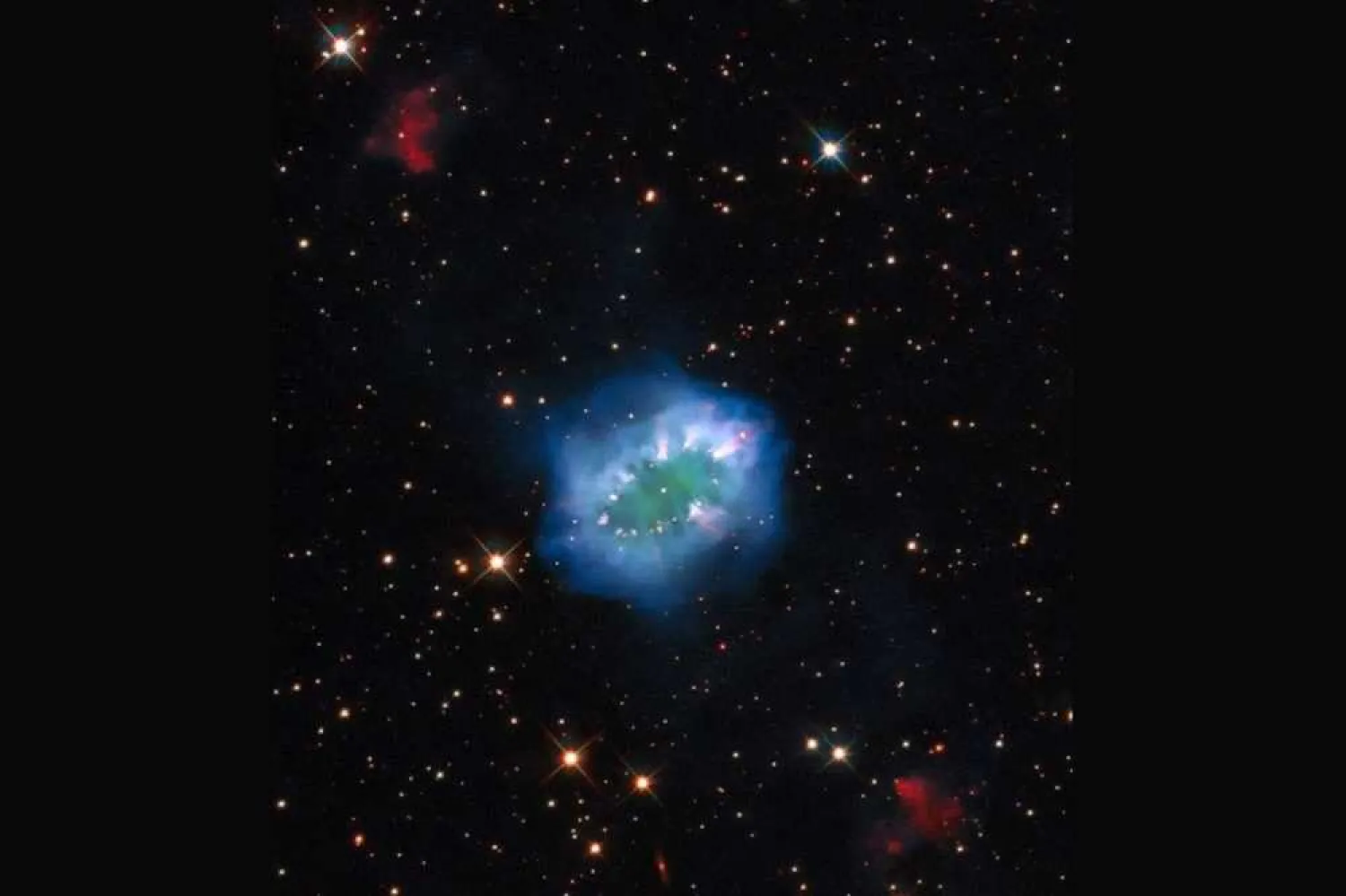Two stars, bound together in orbital matrimony, are slowly ripping each other apart. And, like many relationship squabbles, this stellar spat ends with jewelry.
A nebula is a celestial body composed of ionized gases including hydrogen, helium, and dust. The Necklace Nebula is located about 15,000 light-years from Earth, inside the Sagitta constellation in the northern sky, near another nebula named PN G054.203.4, which witnessed this exceptional event observed by NASA's Hubble Telescope.
To telescopes like Hubble, the newly spotted nebula looks like an emerald oval, ringed with sparkling clusters of jewel-like gas. A pair of binary stars forms a bright speck at the center.
According to a report by the Live Science website, that speck looks like a single star, but it's no bachelor; about 10,000 years ago, the star grew so large that its outermost layer of gas actually swallowed up a smaller companion star. That smaller companion is still orbiting inside its larger partner's gassy sheath.
According to NASA experts, as a star orbits through its larger partner, the gas surrounding the duo begins to rotate faster and faster. At some point, the gas surrounding this stellar couple started swirling so fast that huge swaths of it started spilling out into space.
That runaway gas escaped in an oval shape, gushing outward for trillions of miles in every direction — thus creating the necklace shape we can see so vividly in the above Hubble image.
As for the sparkling jewels running along the outside of the ring, these are just areas where the stellar gas bunched up into particularly dense clusters.
For now, the two stars at the center of the nebula will continue their mad ballroom dance around each other, completing a full orbit in a little more than an Earth day, according to NASA. But their end is uncertain. Many binary couples end their relationships with immense supernova explosions.







